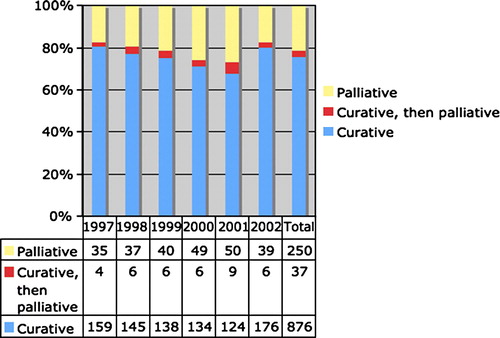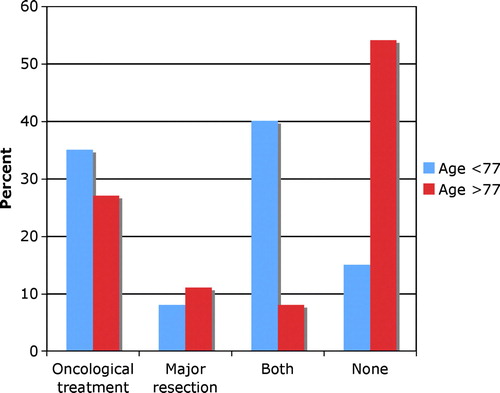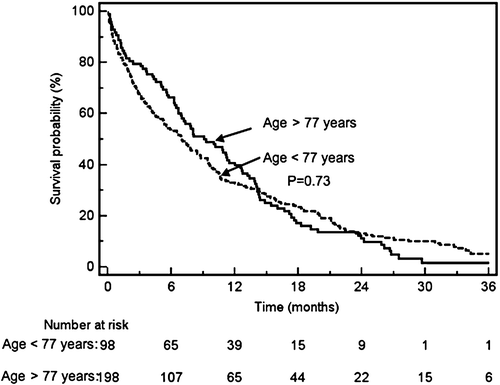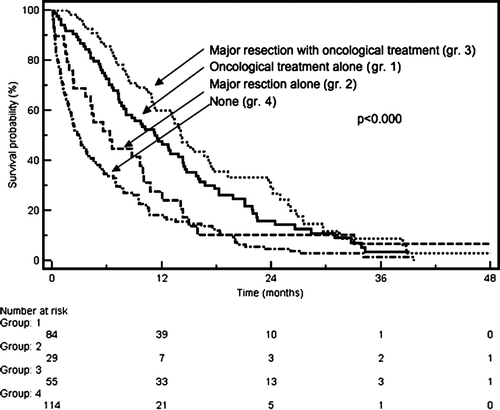Figures & data
Figure 1. Distribution of 1 167 patients diagnosed with rectal cancer in Western Norway between 1997 and 2002 with regard to intention of treatment. In 3% of the patients, the intent changed from curative to palliative treatment either due to incomplete resection or insufficient effect of the preoperative tumour treatment.

Figure 2. Distribution of various treatment modalities in 287 patients with incurable rectal cancer according to age groups. Oncological treatment includes chemotherapy and/or radiotherapy. Age groups were divided according to median age into younger patients <77 years and older patients >77 years.

Table I. Distribution of patients with regard to palliative surgery for rectal cancer. Major resections (i.e. anterior resection, abdomino-perineal resection or Hartmann's procedure) were performed in 88 patients, whilst 97 patients underwent minor procedures (i.e. surgical exploration, stoma, local resection) or non-surgical treatment (n=112).
Table II. Hospital consumption in terms of outpatient visits and hospital admissions for 287 patients palliatively treated for incurable rectal cancer.
Table III. Hospital consumption of 287 patients treated palliatively for incurable rectal cancer with regard to age, marital status, and type of residence, distance to hospital facilities and treatment modalities. Oncological treatment includes chemotherapy and/or radiotherapy.

